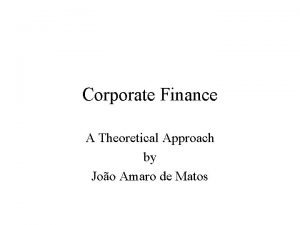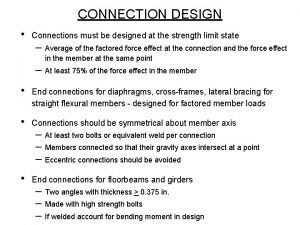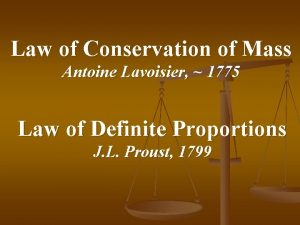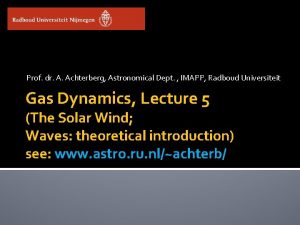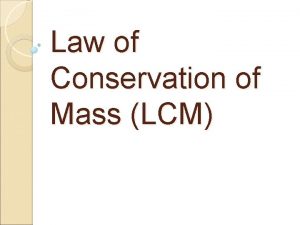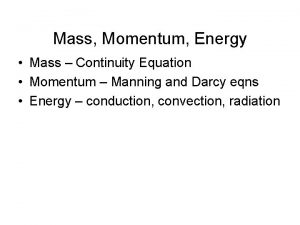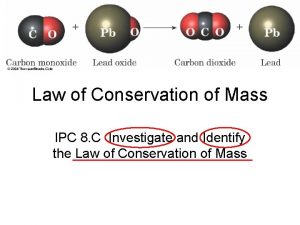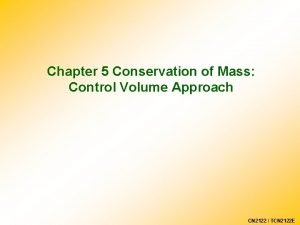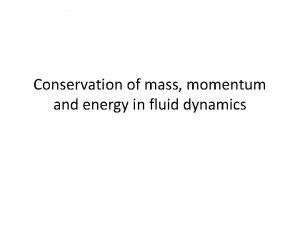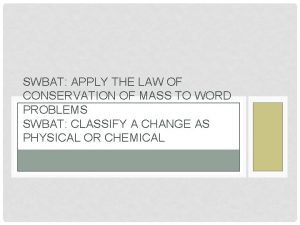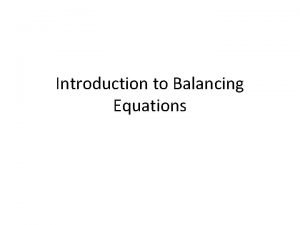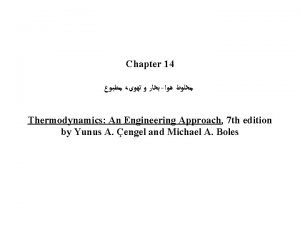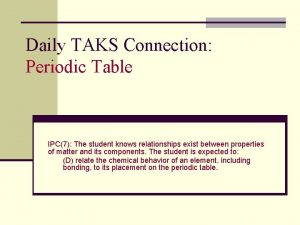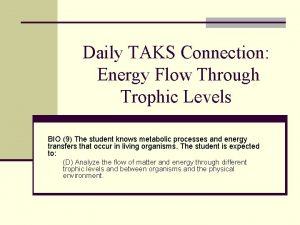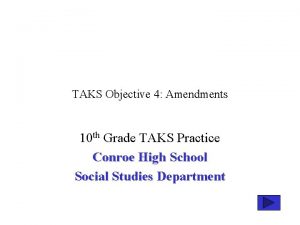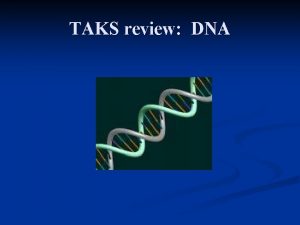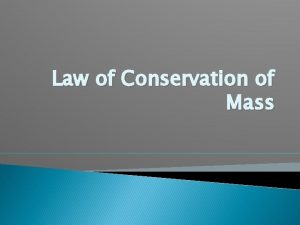Daily TAKS Connection Conservation of Mass IPC8 The
















- Slides: 16

Daily TAKS Connection: Conservation of Mass IPC(8) The student knows that changes in matter affect everyday life. The student is expected to: (C) investigate and identify the law of conservation of mass

Day 1: Construct a folded book foldable titled “Conservation of Mass” n Materials: n Foldable handout (2 pages) n Scissors n Pen n Colored pencils/crayons n Instructions: n Hamburger fold the foldable handouts n Cut 2 cm slits from the edges of the fold of the handout that has page 2 (as marked) n Cut along the fold line of the other sheet of paper beginning and ending about 2 cm from each end (as marked). n Burrito fold and insert paper from step 2 into the hole and open, forming a book. n Color the front cover

Day 2 Notes (record on page 1 of foldable): n Notes: n n n Image source: http: //www. iun. edu/~cpanhd/C 101 webnotes/matter-andenergy/images/h 2 o 2. jpg atoms are neither created or destroyed in a chemical reaction atoms are rearranged in a chemical reaction Student Task: Label the “Reactants” and the “Products” in the boxes provided above the diagram on page 1 of your foldable.

Day 2 Notes continued (record on page 2 of foldable): n Rule: n to support the Law of conservation of mass, the “mass of reactants must equal the mass of products”

Question If all the reactants in a chemical reaction are completely used, which of the following statements accurately describes the relationship between the reactants and the products? a. The products must have a different physical state than the reactants. b. The total mass of the reactants must equal the total mass of the products. c. The reactants must contain more complex molecules than the products do. d. The density of the reactants must equal the density of the products.

Question 2 H 20 → 2 H 2 + O 2 The chemical equation shows H 20 being decomposed. Which of these statements best describes the mass of the products if 150 g of H 20 is decomposed? a. The mass of each product is equal to the mass of the H 20. b. The sum of the products’ masses is 150 g. c. The sum of the products’ masses equals the mass of the H 20. d. Both b and c.

Question In the procedure shown, a calcium chloride solution is mixed with a sodium sulfate solution to create the products shown. Which of the following is illustrated by this activity? a. The law of conservation of reactants b. The law of conservation of products c. The law of conservation of mass d. The law of conservation of energy

Day 3: Notes (record on page 3 of foldable) n. When a chemical reaction takes place and n mass appears “lost”, a gas is probably a product and dissipates into the atmosphere n mass appears “gained”, other atoms were introduced into the system and reacted with

Question Which of these would support the idea that mass is conserved in a reaction that produces a gas as a product? a. Heating the reactants to ensure the reaction occurs in a gaseous state b. Subtracting the mass of the gas from the mass of the solid and liquid products c. Mixing the reactants and measuring their total mass d. Trapping the gas and measuring its mass

Question The mass of a rusty nail is found to be slightly greater than the mass of the same nail before it rusted. The change in mass indicates that the rusting process — a. is a physical change b. involves an energy-to-matter conversion c. decreases the density of the metal d. involves metal bonding with other atoms

Question The illustrations show a conservation-of-mass experiment. The solution in the beaker lost mass because — a. materials have less mass at high temperatures b. the mass of the reactants and products was less than 100 g c. sodium sulfate (Na 2 SO 4) is lighter than air d. some of the water molecules turned into water vapor

Day 4 Notes – record on page 4 of the foldable 1. List the atoms found in a chemical formula. n an atom is indicated by an uppercase letter n Example: H – Hydrogen OR n an uppercase letter followed by a lowercase letter n Example: Hg – mercury 2. Determine the number of each atom type. n Subscript multiplied by coefficient n Example: subscript 2 x 2 H 20 H coefficient 2 = 4 atoms total O Subscript 1 x coefficient 2 = 2 atoms total coefficient subscripts

Day 4 Student Task: n Determine the type and number of atoms in 2 CH 4 and record on the table, page 4 of your foldable.

Day 5 Notes (record on page 5 of foldable): n To determine if a chemical equation demonstrates the law of conservation of mass, calculate the number/type of atoms for both the reactants and products (coefficient x subscript) n Example: 2 Na + Mg. F 2 → 2 Na. F + Mg Reactants Na = 2 Mg = 1 Products Na = 2 Mg = 1 F=2 Because there are the same number of each type of atom in the reactants and products, this equation is balanced and supports the law of conservation of mass.

Day 5 Student Task: n Student task: Determine if the equations below support the law of conservation of mass. Show your work on page 6 of your foldable. 1. Cl 2 + KI → 2 KCl + I 2 2. 4 Na + O 2 → 2 Na 2 O 3. 2 Na + HCl → 2 Na. Cl + H 2

Day 6 Notes: Record the following steps on page 7 of your foldable. Use these steps to balance the equation shown. How to balance a chemical equation: 1. Determine type/number of atoms for reactants and products. (type is always the same for both) 2. Choose an element that is not balanced. 3. Add a coefficient in front of the formula with that element and adjust your counts. 4. Repeat steps 2 -3 until balanced.
 Moore finance taks
Moore finance taks Slip critical connection vs bearing connection
Slip critical connection vs bearing connection Slip critical bolted connection
Slip critical bolted connection Slip critical connection vs bearing connection
Slip critical connection vs bearing connection Text to text connections
Text to text connections Antoine lavoisier law of conservation of mass
Antoine lavoisier law of conservation of mass Mass conservation equation
Mass conservation equation Conservation of mass
Conservation of mass Continuity equation derivation
Continuity equation derivation Law of conservation of mass
Law of conservation of mass Law of conservation of mass
Law of conservation of mass Momentum conservation fluid mechanics
Momentum conservation fluid mechanics Br3cl9 name
Br3cl9 name Conservation of mass problems
Conservation of mass problems Example of law of conservation of mass
Example of law of conservation of mass Mass conservation equation
Mass conservation equation Mass conservation
Mass conservation
